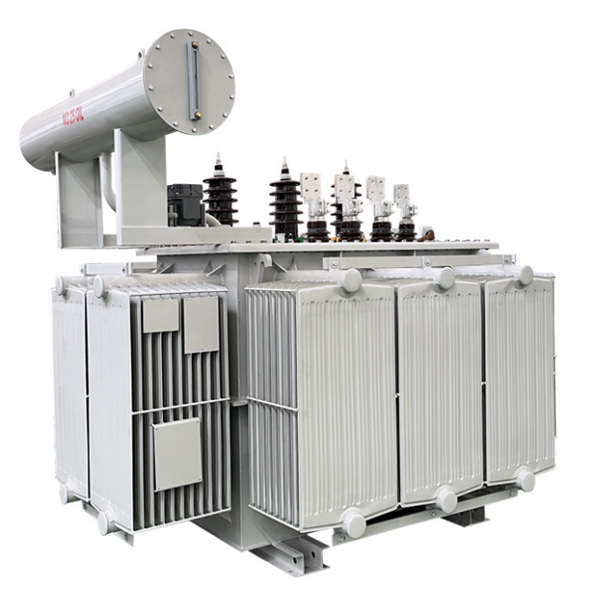Why Are Power Transformers Essential for Efficient Energy Transmission in Modern Electrical Systems?
2025-02-20
Power transformers play a critical role in modern electrical systems, ensuring the efficient transmission and distribution of electricity across vast distances. From powering cities to supporting industrial operations, power transformers are the backbone of energy networks. But what makes them so vital, and how do they contribute to the stability and reliability of the electrical grid?
What Is a Power Transformer, and How Does It Work?
A power transformer is a device used to transfer electrical energy between two or more circuits through electromagnetic induction. Its primary function is to step up (increase) or step down (decrease) voltage levels in electrical systems, enabling efficient power transmission.
At its core, a power transformer consists of three main components:
1. Primary and Secondary Windings: These are copper or aluminum coils responsible for transmitting electricity in and out of the transformer.
2. Core: Made of laminated steel, the core creates a magnetic field that facilitates the transfer of energy between windings.
3. Insulation System: This ensures the safety and durability of the transformer by preventing electrical short circuits.
When electricity flows through the primary winding, it generates a magnetic field in the core. This magnetic field induces a current in the secondary winding, transferring power while adjusting the voltage level.
Why Are Power Transformers Crucial for Energy Efficiency?
Power transformers are indispensable for minimizing energy loss during transmission and ensuring the efficient delivery of electricity. Here’s why they are so important:
1. Voltage Regulation: High-voltage transmission is essential for reducing energy loss over long distances. Power transformers step up the voltage at power plants for efficient transmission and step it down at substations for safe distribution to homes and businesses.
2. Reduced Power Loss: By enabling high-voltage transmission, transformers minimize energy lost as heat due to resistance in power lines. This ensures more electricity reaches its intended destination.
3. Grid Stability: Power transformers help maintain a stable supply of electricity by managing voltage fluctuations and load distribution across the grid.
4. Industrial Applications: Many industries require specific voltage levels for machinery and operations. Transformers customize power delivery to meet these demands, ensuring safety and efficiency.
5. Renewable Energy Integration: As renewable energy sources like solar and wind become more prevalent, transformers play a key role in connecting these systems to the grid by matching their output to grid requirements.
Where Are Power Transformers Used?
Power transformers are used in various stages of the electrical system, from generation to consumption. Common applications include:
- Power Plants: Step-up transformers increase voltage for long-distance transmission.
- Substations: Step-down transformers reduce voltage for safe distribution to residential and commercial areas.
- Industrial Facilities: Transformers adapt voltage levels to suit heavy machinery and equipment.
- Renewable Energy Sites: They integrate energy generated from solar farms and wind turbines into the main grid.
What Are the Different Types of Power Transformers?
Power transformers are designed to meet specific needs within the electrical system. The main types include:
1. Step-Up Transformers: These increase voltage for efficient power transmission over long distances.
2. Step-Down Transformers: These reduce voltage for safe use in residential, commercial, or industrial settings.
3. Distribution Transformers: Smaller transformers that deliver electricity directly to end-users.
4. Auto-Transformers: Compact and cost-effective transformers used for small voltage changes.
5. Three-Phase Transformers: Commonly used in industrial and large-scale energy applications for high power demand.
What Challenges Do Power Transformers Face?
Despite their importance, power transformers face several challenges, including:
1. Overheating: Excessive load or environmental factors can cause transformers to overheat, potentially reducing their lifespan.
2. Aging Infrastructure: Many transformers in use today are decades old, leading to inefficiencies and the risk of failure.
3. Maintenance Costs: Regular inspection and maintenance are essential to prevent breakdowns, which can be costly and time-consuming.
4. Environmental Impact: Transformers rely on insulating oils, which, if not handled properly, can pose environmental risks.
What Innovations Are Shaping the Future of Power Transformers?
Advances in technology are addressing these challenges and improving the efficiency, reliability, and sustainability of power transformers. Key innovations include:
1. Smart Transformers: Equipped with sensors and IoT capabilities, these transformers monitor performance in real-time, enabling predictive maintenance and reducing downtime.
2. Eco-Friendly Materials: The use of biodegradable insulating fluids and advanced cooling systems reduces the environmental impact of transformers.
3. Compact Designs: Smaller, lightweight transformers are being developed to reduce space requirements and installation costs.
4. Improved Efficiency Standards: Modern transformers are designed to meet higher efficiency standards, minimizing energy loss and reducing operating costs.
Conclusion
Power transformers are indispensable for the efficient and reliable operation of modern electrical systems. By stepping up and stepping down voltage levels, they ensure that electricity can be transmitted over long distances with minimal loss, reaching homes, businesses, and industries safely and effectively.
As the demand for electricity continues to grow and renewable energy integration becomes more widespread, the role of power transformers will become even more critical. With ongoing innovations in technology and materials, power transformers are poised to meet the challenges of the future, supporting a sustainable and efficient energy landscape.



